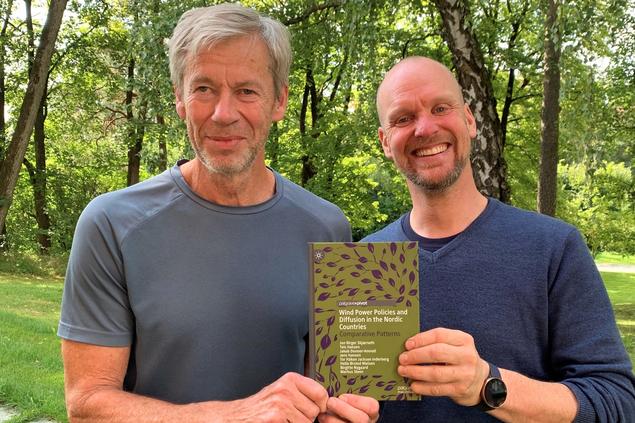Understanding Wind-power Trends in the Nordic Countries

Exploring Wind Power Policies and Diffusion in the Nordic Context: A New Book.
The recently published book, Wind Power Policies and Diffusion in the Nordic Countries, delves into the dynamics of windpower policies and their impacts in four Nordic countries: Denmark, Finland, Norway, and Sweden. The study examines the varying approaches they have chosen regarding windpower policies and windpower diffusion despite their shared features as Nordic welfare states.
Nordic Shift towards Wind Power
Since roughly 2010, the Nordic countries have significantly amplified their windpower capacity, in line with the need to replace fossil fuels with renewable energy sources. As Jon Birger Skjærseth, Research Professor at the Fridtjof Nansen Institute (FNI), points out, ‘The Nordic countries serve as a valuable case study on how policy choices influence the trajectories of windpower diffusion under different conditions. Their experiences may offer important insights for other democracies aiming to navigate the complexities of the energy transition.’
Learning from Nordic Experiences
For policymakers striving to meet ambitious climate goals, this new book offers valuable lessons and insights also beyond the Nordic region. These can prove especially relevant as countries grapple with the challenge of increasing their renewable energy capacity, including options like wind power., and navigating complex trade-offs like managing land use and conserving nature.
Skjærseth further notes, ‘The Nordic example underscores the significance of a balanced policy approach that not only drives renewable energy growth but also addresses the intricate balance between national energy demand, local needs and land-use to promote steady political support.’
Country-Specific Insights: Four Wind-power Journeys
Chapters by leading Nordic scholars focus on Denmark, Finland, Norway and Sweden, and offer important insights into their approaches to wind power (Iceland has very little wind power).
Denmark: A pioneering windpower nation, Denmark has adopted a blend of technology-driven and market-oriented policies. This combination has fostered consistent growth in installed windpower capacity, which covered almost 50 per cent of the nation's electricity production by 2020. Danish experiences make clear the challenge of balancing green industrial objectives with local acceptance and respect for environmental considerations.
Finland: After a delayed start, Finland has rapidly increased its windpower production, emerging as a significant contributor to the energy landscape. Finnish experiences here highlight the impact of energy-economic situations and market-oriented policies on windpower growth, also in an energy context that has focused mainly on nuclear power and bioenergy.
Norway: Norway's windpower trajectory testifies to the nation's transition from hydropower dominance. An unexpected windpower boom that originally fuelled local opposition was driven mainly by a combination of EU adaptation pressure, support measures and lower costs of technology.
Sweden: In contrast, Sweden's wind-energy journey has been shaped by domestic political negotiations and the need to balance renewable and nuclear energy interests. The Swedish experience showcases the coexistence of wind energy and nuclear power within a predominantly market-oriented policy environment.
Comparative Analysis: Unveiling Patterns and Differences
The overarching narrative of the book emerges as it compares the policy mixes and windpower diffusion across these four Nordic countries. The contrasts between these comparative welfare states — in their political systems, wind resources, and climate ambitions—are mirrored in their energy composition, policy formulations, and trajectories of windpower development. Through pattern matching, explanation building, and heuristic assessment, the book delves into the intricate fabric of policy dynamics, shedding light on the conditions that either promote or hinder the expansion of wind power.
A Laboratory for Learning
Focusing on the Nordic countries as an experimental arena, offering insights into conditions that facilitate or impede national-level windpower diffusion. The shared features regarding political systems, wind resources, and climate aspirations contrast with the diversity in energy composition, policy mixes, and windpower trajectories among the four. This is the puzzle this book aims to untangle.
With renewable energy becoming central to global efforts to address climate change, the lessons drawn from the Nordic experience resonate beyond their borders, shaping the trajectory of energy transition and policy formulation also in other countries.
